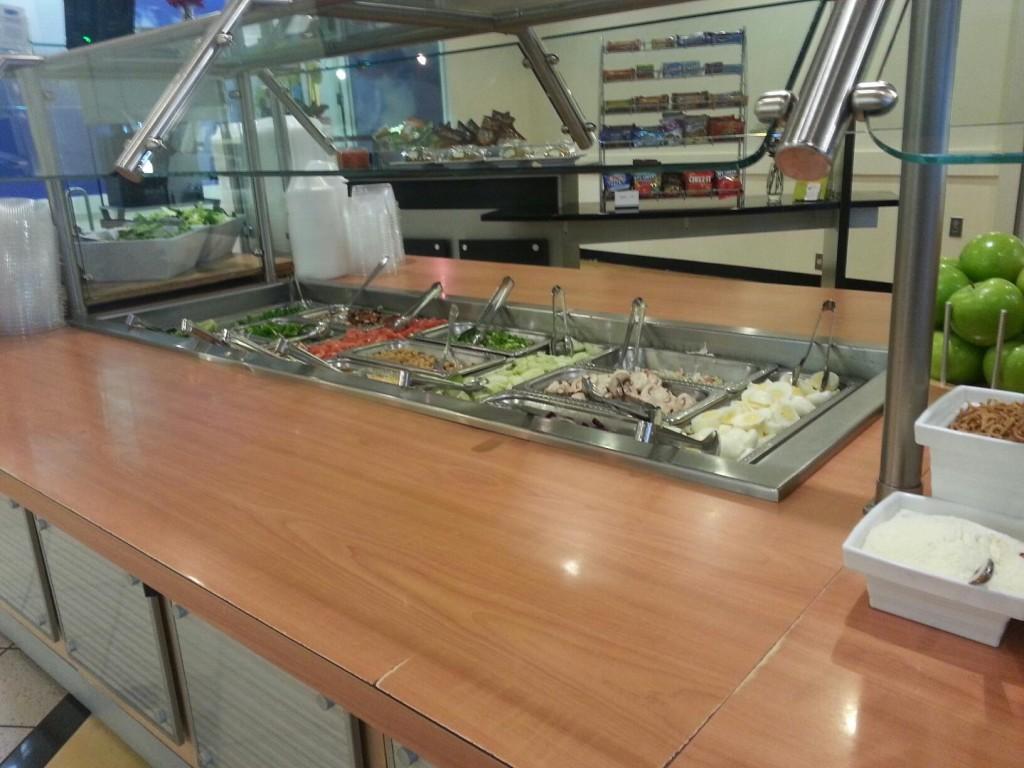Fresh not frozen: Could LHS join the salad bar movement?
The student salad bar could look like this one established at Sodexo Headquarters in Gaithersburg.
October 2, 2013
What if the school put in a fruit/salad bar filled with different varieties of fruits, lettuces, toppings, all fresh and delicious?
The cafeteria serves the basic kinds of fruits and small side salads that are low in price. Peaches, oranges, strawberries, and apples are a typical fruit served in the cafeteria. Even though these fruits are great in nutrients and good for the human body, not everybody likes these fruits. Some teens like blueberries instead of strawberries and others could like dragon fruit or mangos.
Instead of the small salad side that is a requirement for school lunches, teens could make a salad of their liking.
“The kids really can taste how fresh the food is,” said JoAnne Hammermaster, the president of Real Food for Kids, who supports salad bars in schools. A salad bar could add a variety of fruits and kids could discover new tastes, something that is difficult for picky eaters.
Some students are hesitant about a salad bar. “It depends on the quality of the lettuce and how fresh it is,” sophomore Delaney Wagner said.
Having a salad bar introduced into the school also has negatives. “Lettuce is a hard food to keep fresh. If it is sitting out in the open, it is more prone to wilting and browning,” said Jessica Baye, a dietitian. “If kept at a constant temperature of 50-60 degrees Fahrenheit, the lettuce provides the best nutrients.”
Another problem is the consistency of cleanliness and the expectation of waste. A normal salad/fruit bar, according to Michelle Obama’s Let’s Move! Campaign, salads cost $1.80 per person, but that does not include the cost of waste and hiring extra employees for serving. At the end of the day, a lot of the salad in the salad bar could not be stored because it has been open to the air.
Another reason is the difficulty of cleanliness of the salad bar. Would you want to have a dirty bar with olives and onions mixed into cottage cheese? Salad bars are hard to keep clean when everyone is always serving himself. Students may carelessly mix the foods and contaminate the food. Because of this problem, at least two employees would be needed to keep the salad bar clean and germ free.
Even with all these negatives, this has been very successful program with other schools. In September The Washington Post featured Real Foods for Kids partnership with Fairfax County Public Schools. The school system has opened a salad bar in George C. Marshall High School.
The Let’s Move! program has enabled grants for establishing 2,678 salad bars to schools around the country. They have served over one million teens and young children fresh salads.






